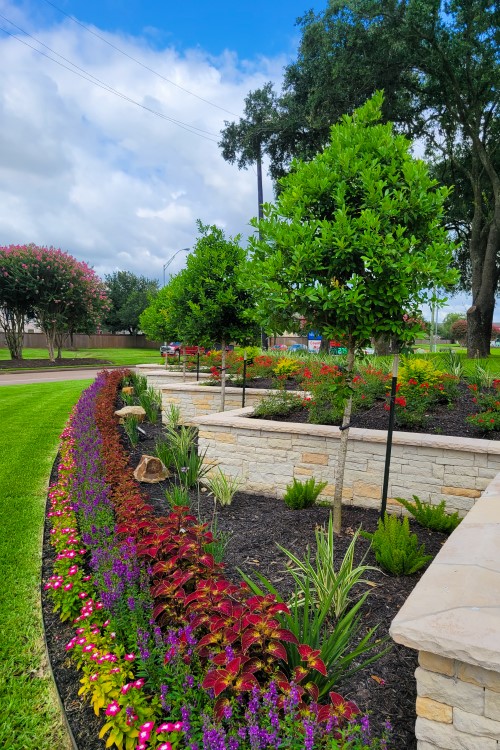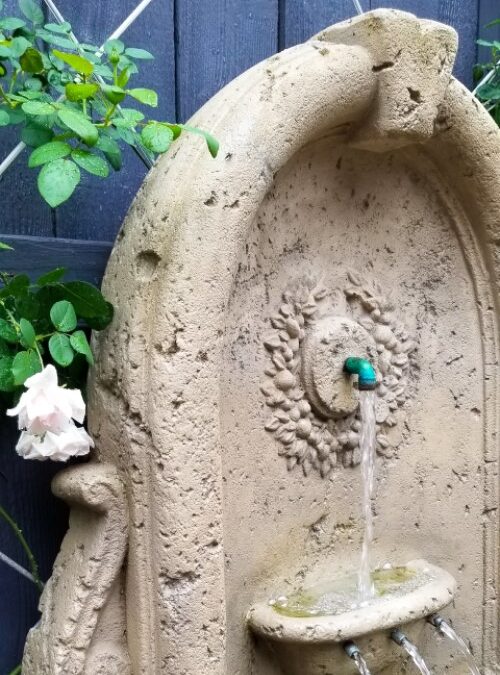“When people begin to protect themselves as individuals and not as a community, the battle against crime is effectively lost.” ~Oscar Newman
Last year, violent crime decreased 8% in Houston compared to 2021, but had an 11% increase in property crimes compared to 2021. Makes sense, as we are no longer enduring the forced togetherness of the pandemic and more Houstonians are returning to the office and traveling again. Numbers are important, but so is our perceived safety and we just feel less safe, don’t we? After all, we have just lived through a once-in-a-lifetime (hopefully) pandemic that ushered in big social changes and a couple of particularly bitter election cycles that seemed to bring out the lesser angels in many. It feels as though the rules have all changed and we are living in a ‘brave, new world’ for better or worse.
What if there was something you could do to make it less likely that you will be a statistic? Two words—Defensible Space. “Defensible space” was coined by Oscar Newman in his landmark book of the same name and is a term to describe a collection of systems (both real and symbolic), firmly defined areas of control, and good visibility. His research showed a significant reduction in crime when these factors are in place.
There are four factors of defensible space and ALL need to be in place to be effective.
- An obvious distinction between public (street) and semi-private (lawn) and private (home) spaces.
- Capacity for good surveillance.
- The perception of a particular property’s uniqueness, isolation, and stigma.
- The proximity to ‘safe’ vs. ‘unsafe’ areas.

How do you make a clear delineation between what is a public space v. semi-public v. private space? Here is where your sidewalk, walkway to your front door, and landscaping can step up to protect you…literally, if possible. Each of those areas should have their own ‘language’, i.e. palette of colors, materials, etc. that makes it distinct from the next area. For example, your walkway to your front door should not be the same width, color, or material as the public sidewalk (should you be one of the lucky ones to live on a street with a sidewalk). If you can manage it on our nearly flat topography, even one step up reinforces the message that a visitor is leaving the public space.
Try to make your walkway narrower, a different color or stamped, use a different material, etc….whatever you can so it just looks different. This sends a signal to any passerby that they have left the public space of the street or sidewalk and are now on private property. If you already have a 4’ wide concrete walkway that looks just like the public sidewalk, add an arbor or 2 flanking pots of flowers where your walkway meets the sidewalk or anything else that stakes your claim to that area and sends the signal that anyone that passes onto your walkway needs to justify their presence. You want to ‘occupy’ your property right up to the sidewalk or street so there is no ambiguity that a visitor (invited or not) has passed onto private property. No need to be menacing or threatening here. Flowers, welcome signs, a change in materials to make a distinction is all you need.

The second factor is surveillance. Make sure your sightlines from inside your home are clear and unobstructed so you can see people passing on the street around you. Also, make sure your home is easily surveilled from the street, as well. I know that might seem counterintuitive, but the point is to make any would-be thief feel ‘watched’ from every angle. Criminals don’t want to get caught. Most theft is opportunistic and targets are chosen based by being able to get in and out quickly and without detection. Remove or trim back any foliage that is covering windows anywhere around your house. Open window coverings during the day. When the sun is out, unless you have really bright lights inside, no one should be able to see inside your house, but you want any would-be thief to feel like someone is wathcing them.
If you can swing for cameras (real or dummy) those can be a deterrent, as well. Just make sure they are obvious and even better if they are motion activated and can ‘speak’. However, NextDoor is littered with posts of theives caught on Ring cameras that didn’t seem detered by them. You and your neighbors presence or perceived presence is a far better deterrant.
If you are really serious about security, find a buddy that will try to ‘break in’ to your house. Sometimes we become blind to how our homes and properties are perceived by others. Pop a couple of beers and sneak around your home and see where they would try to break in if they were of the criminal persuasion and adjust those areas accordingly.
The next factor is uniqueness, isolation, and stigma. What does all that mean? Well, this one is a little complicated and how they affect crime in your neighborhood depends. If your property is unique in a good way (upscale neighborhood), hard to get to, and known to be a chichi neighborhood, you are set! Crime rates are pretty low in those neighborhoods for a variety of reasons. However, those factors can work against you if you live in a low-income setting. Those that are somewhat in the middle, well, it depends…Low income areas are almost always stigmatized and you can see the difference in those neighborhoods by the ‘cheaper’ materials and construction methods that builders use, sometimes out of economic reasons, but often the visual stigma is maintained just because. If you don’t live in a low-income area, why do you care about that?
Clearly, where your home is situated relative to an area that is deemed unsafe is a tougher nut to crack and short of moving, not something easily controlled. Houston is famous (or infamous) for its lack of zoning. What this means is if you are living in a middle-class neighborhood, most likely your neighborhood is butted up to one that is low-income. Blighted areas attract crime, plain and simple. Even if you don’t live in one, the crime that plagues those areas can and does bleed into adjacent neighborhoods. Am I saying that low-income residents are criminals? Absolutely not! Simply that crime is highly correlated with low-income, isolated, stigmatized, and anonymous areas. In fact, the residents of these dismal areas are the most likely to be the victims of crime because regardless of where a criminal lives, he or she is going to target those that are least likely to be able to protect themselves and their property.
What’s the solution to this large and seemingly intractable source of crime? Donate a tree and plant one in your own yard while you are at it. Ample research has proven that “The more foliage, the fewer felonies.” Helping to make Houston more beautiful improves the quality of life for all Houstonians. Even if it isn’t in your neighborhood, odds are you drive past a blighted area, or shop or live near one.
That’s why I love Trees For Houston‘s mission. Trees do so many amazing things for us that they are almost magical, but their ability to positively influence crime rates make them one of the easiest, most cost-effective things we can do to improve our lives and make our homes safer here in the Bayou City.

